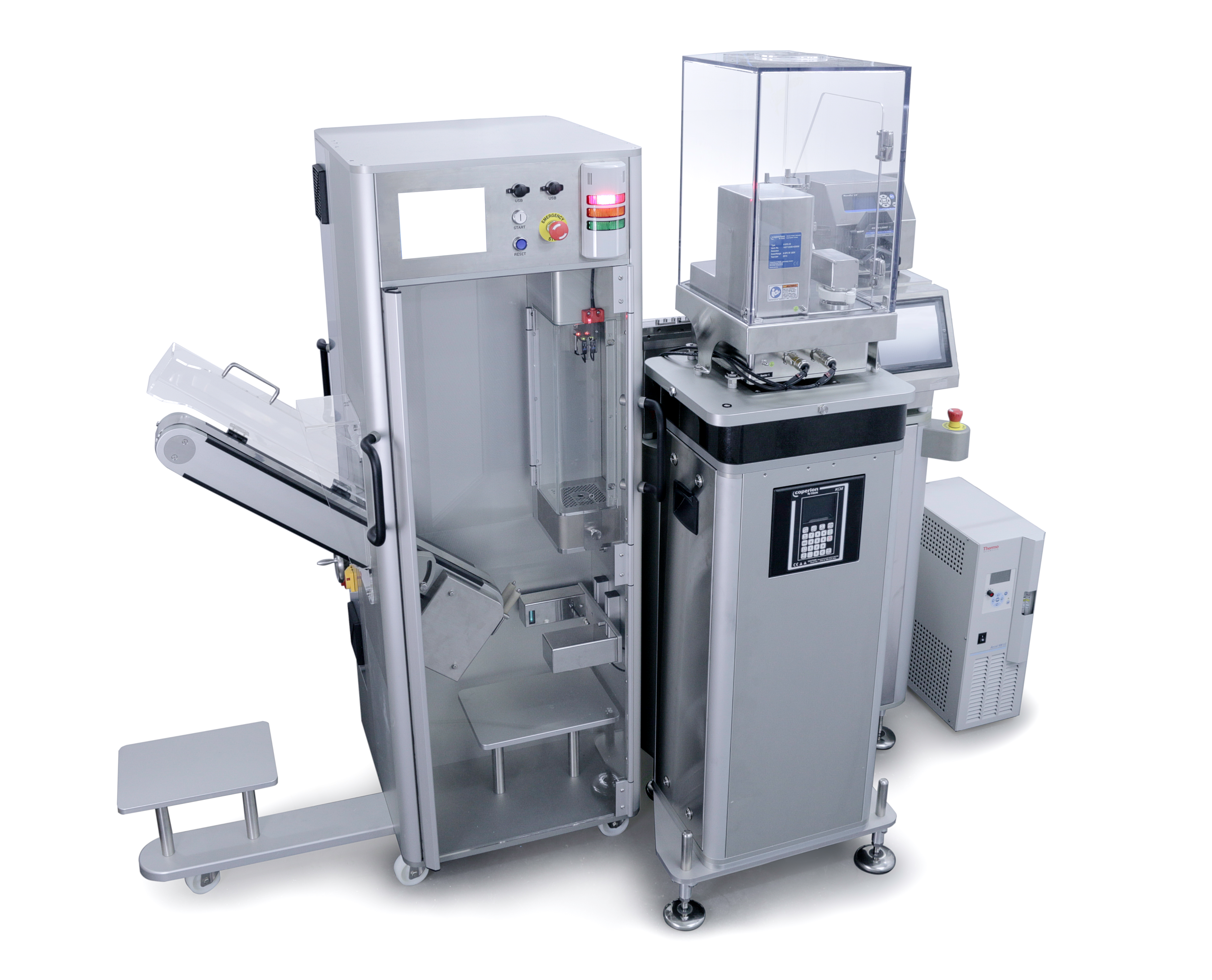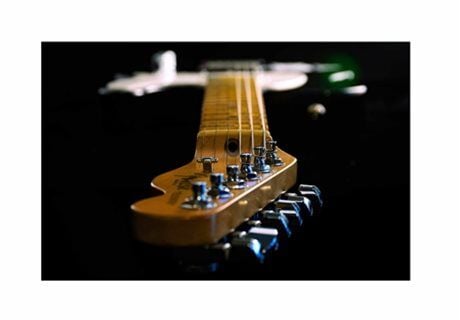Driving excellence in aseptic fill-finish: Our strategic partnership with Stäubli Robotics
At 3P innovation, we engineer automation with purpose - solutions that don’t just meet the demands of aseptic manufacturing but redefine what’s...
5 min read
Jake Canner : 17 September 2021
Our latest blog is written by 3P innovation Project Engineer, Jake Canner. Jake, who plays the guitar in his spare time, tells about the importance of having a solid set up not only in the music industry but in his own work at 3P for both successful play and manufacturing.
One cultivates a certain sense of confidence when something is running smoothly. This is a universal satisfaction that you will have no doubt experienced in your personal and professional lives at some point. It could be a motorcycle engine, running steadily after a session of balancing carburetors. It could be a group of children who have settled into their roles in a collaborative game with one-another. Maybe it’s finding that comfortable running pace. It could be a custom automation process going strong after several hours of running with no stoppages. For me in particular, it could be when the whole band is playing ‘in the pocket’.
So how can you tip the odds in your favour, and seek out this confidence-boosting contentment? Well, it’s in the set-up. More specifically, it’s in identifying the things which matter, and getting them just right before you start – whether that’s the workshop or the stage.
At 3P, we take great pains to design good systems, but there’s always a task to ‘dial it in’ – to optimize the fits and feels based on real components rather than the theoretical tolerances. This is especially true in the world of custom, one-off processes and equipment.
Hence, a certain satisfaction is generated not just when the numbers look right, but when something feels right.
When time is on your side, and ultimate accuracy is required, you can take the approach of the purist. In our industry, this is commonplace when we are trying to determine key parameters in a new process – for example, the assembly of small components in a novel device.
The engineer will be able to set up an assembly to a predefined set of conditions and measurements. Each step of the assembly will be checked against design documents, positions will be measured & verified with appropriate tools; possibly even with the use of custom tools and gauges, bespoke for the particular job. This allows the engineer to be certain that the equipment is set-up ‘by the numbers’, and perfectly aligned. It also often means that the part being measured and adjusted is the part which matters most to the process – usually some tooling or end effector.
In the case of hygienic or aseptic machine design, this type of approach may be called for. When a design allows for the careful alignment of machine components, tooling and end-effectors, it can also allow for very clean designs, minimising extraneous components, and reducing interruptions to airflow in the process environment. This design approach lends itself well to highly custom equipment, typically suited to a single product or process.

SMFF Machine, 3P innovation
In the guitar world, the equivalent would be a meticulous set-up on the bench. An offline activity, in which a skilled individual has plenty of levers to pull in achieving the perfect set-up. First, there’s the ‘action’ – or the gap between the top of the frets and the strings. If the action is too low (the gap is too small), then the strings will buzz on the frets and sound awful. If the action is too high, then the player must press much harder in order to fret any notes. This is normally adjusted by careful setting of the truss rod – a simple rod, usually made of steel, threaded at one end. Its job is to react the tension caused by the strings along the guitar’s neck, keeping the neck straight and maintaining a consistent gap between the strings and the fretboard. Adjustments to the action can also be made at the bridge – where the strings are supported at the base of the instrument. All of these adjustments are checked where it matters; at the string, usually with a simple gauge (though a calibrated steel rule at 20C works just fine as well!)

1.5-2.0mm is about right (https://hotstringsguitar.com/electric-guitar-setup/)
Next, the guitar tech will probably adjust the intonation of the instrument. In musical terms, intonation is a term defining pitch accuracy. In this case, the pitch accuracy of a single string across the full length of the fretboard. In physics terms, the job of the frets on a guitar neck is to accurately subdivide the string into steps, such that the resulting frequency difference between notes at any two frets is the same. That is to say, the musical pitch increase between frets 5 & 6 is the same as between frets 13 & 14. There is therefore a relationship between the absolute length of the string, and the spacing of the frets on your particular fretboard.
There are adjustments to be made to the bridge for each individual string to account for this. The measurement tool is often a highly accurate tuner, which monitors the frequency produced by the strings and affords the technician a visual, measurable understanding of the problem – again, measuring the thing that matters, rather than relying on inference to get the perfect set-up. In any case, after a couple of hours on the bench, your reward is a guitar which feels great, sounds right and gives the player the confidence to wow the crowd.

The BOSS TU-3. A staple tuner for studio and stage alike, and the successor to the ubiquitous TU-2 (https://www.boss.info/uk/products/tu-3/)
Other types of machinery call for other types of set-up. Consider a flexible platform, configurable for many types of product & cycling through a range of them in a single shift. Changeover time or changeover complexity may well be a key driver in such a design.
Automatic set-up of machines can be quite readily achieved by the use of reliable servo-motor positioning, position sensors on axes, pre-determined hard stops and datum sequences. These allow for repeatable and quick ‘zeroing’ of machine positions, and can also be employed for a ‘no-touch’ set-up in sterile applications once a decontamination step has been performed. The trade-off is that you are typically setting up to a component located relatively far away from the end effectors, meaning that we must rely on good tolerancing and excellent manufacture of machine parts in order to have confidence in the freshly reset ‘zero’.
This is critical in the case of format change tooling. Servo-driven linear actuators can boast positional accuracies measured in microns, but if you have a process on a lever-arm some 500mm away from the point of datum measurement, the engineer must consider the true sensitivity of the positional accuracy where it really matters.

A proximity sensor in the technical area makes for a repeatable datum of a linear actuator
Similar gadgets and offerings exist for guitars, although they’ve never really taken off in the same way. Third party automatic tuning machine-heads can be retrofitted to most electric guitars, and facilitate on-demand tuning of your guitar to standard and more exotic tunings at the touch of a button, again using frequency monitoring against reference data to ensure a perfectly in-tune instrument. Other futuristic looking devices claim to continuously monitor string tension via a dedicated CPU, introducing a number of complications to an otherwise elegant system.

Tronical Tune PLUS replaces your normal tuning pegs for automatic tuning
(https://www.tronicaltune.com)
In both cases, one can find themselves lulled into a false sense of security with automatic set-up procedures. It’s very easy to assume that the machine is correct, but perhaps an instability has crept in to another part of the set-up, or maybe the process is sensitive to misalignments too fine for a coarse automatic function to compensate for. Automatic tuners do not correct for poor intonation, in much the same way as automatic datum sequences do not compensate for improperly mounted tooling! The engineer must have absolute control over the tolerance loop between the point of datum measurement and the parts doing the work.
We’ve all come across this kind of set-up in our lives. You have something which isn’t running properly. You’ve measured things, you’ve refitted parts, you’ve probably asked it very nicely to behave itself. You take it to the wizard and they seem to intuitively know the one subtle tweak required to set you going smoothly again. This is the gift of experience, and sometimes you just need the advice of your elders and betters to overcome an issue with your set-up. This is like the grizzled roadie who - in the middle of a gig - has noticed your string snap, has the back-up guitar ready to go, strums it unplugged and notices that the band must have tuned up slightly flat. They can eschew the fancy equipment, tune it up by ear and feel and get you swapped over during a drum break. If you find a wizard, keep them on your good side!

Kyle Henderson catches a guitar tossed to him by Panic! at the Disco’s Kenneth Harris. (Photo by Anna Lee, Instagram: @annaleemedia)

At 3P innovation, we engineer automation with purpose - solutions that don’t just meet the demands of aseptic manufacturing but redefine what’s...

Pharmaceutical extrusion is a critical enabler in the manufacture of advanced drug delivery systems, from long-acting injectables to solid implants....

Before delving into some technical details of cell and gene therapy manufacturing, it’s worth pausing to reflect on the human stories that drive this...
